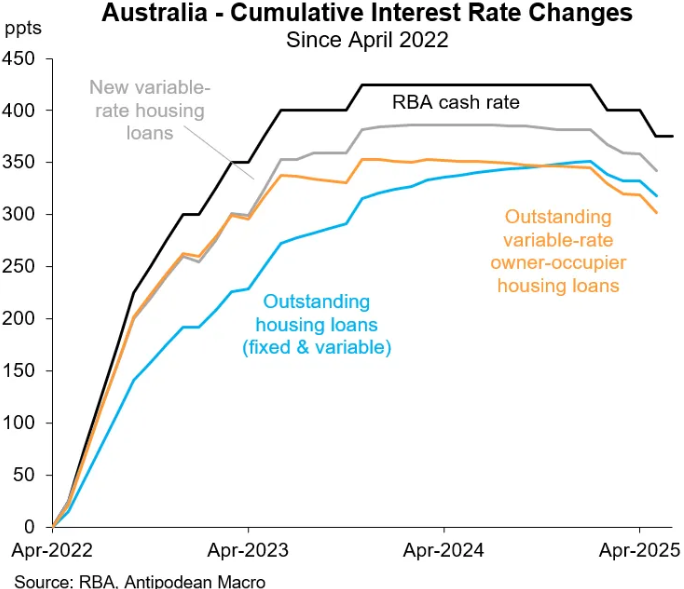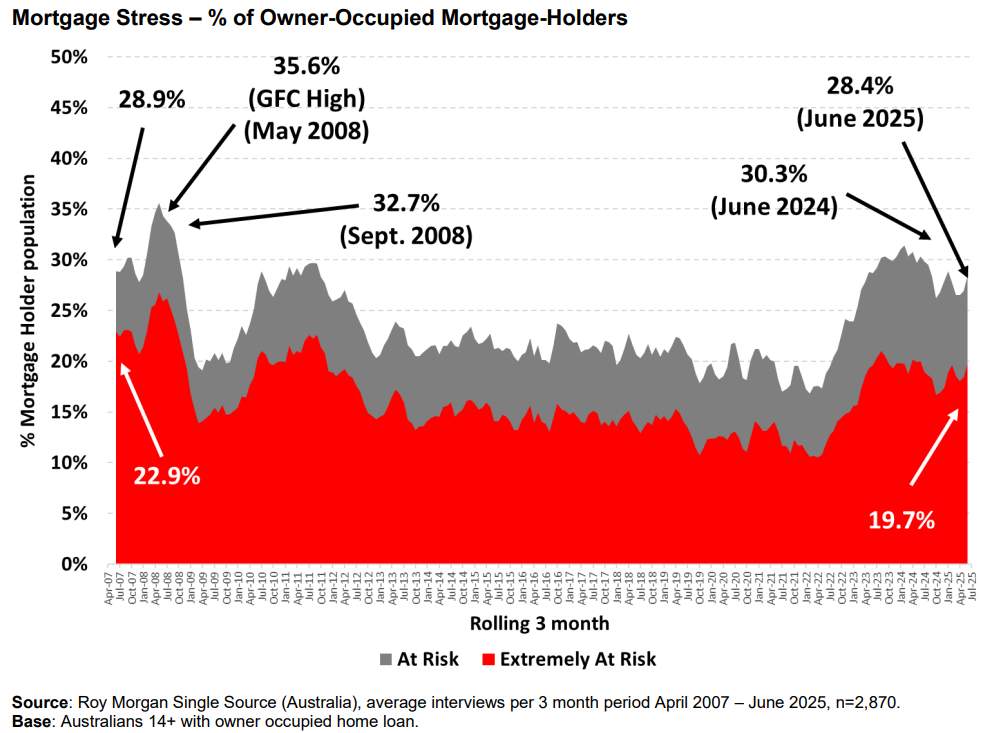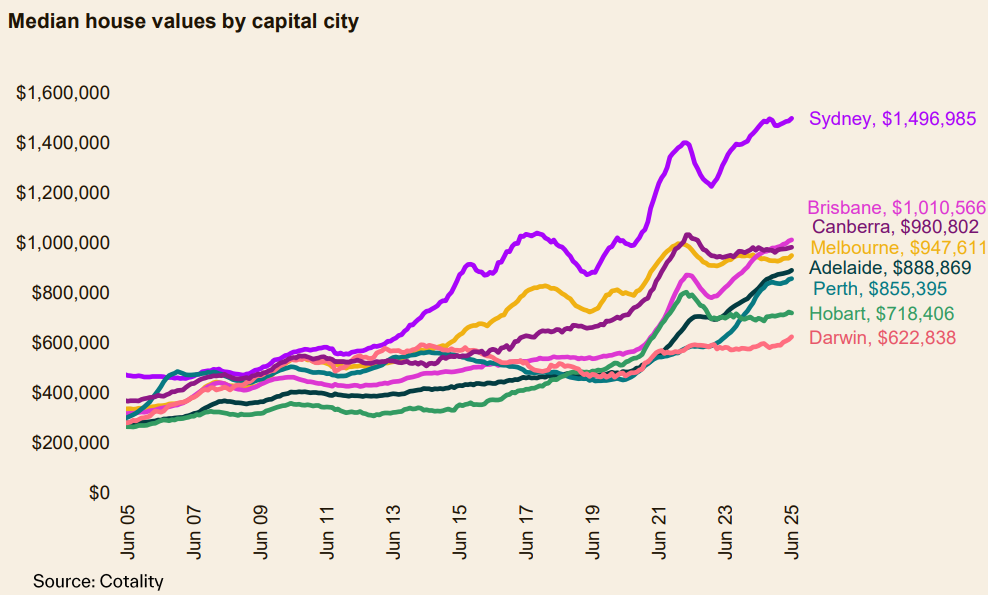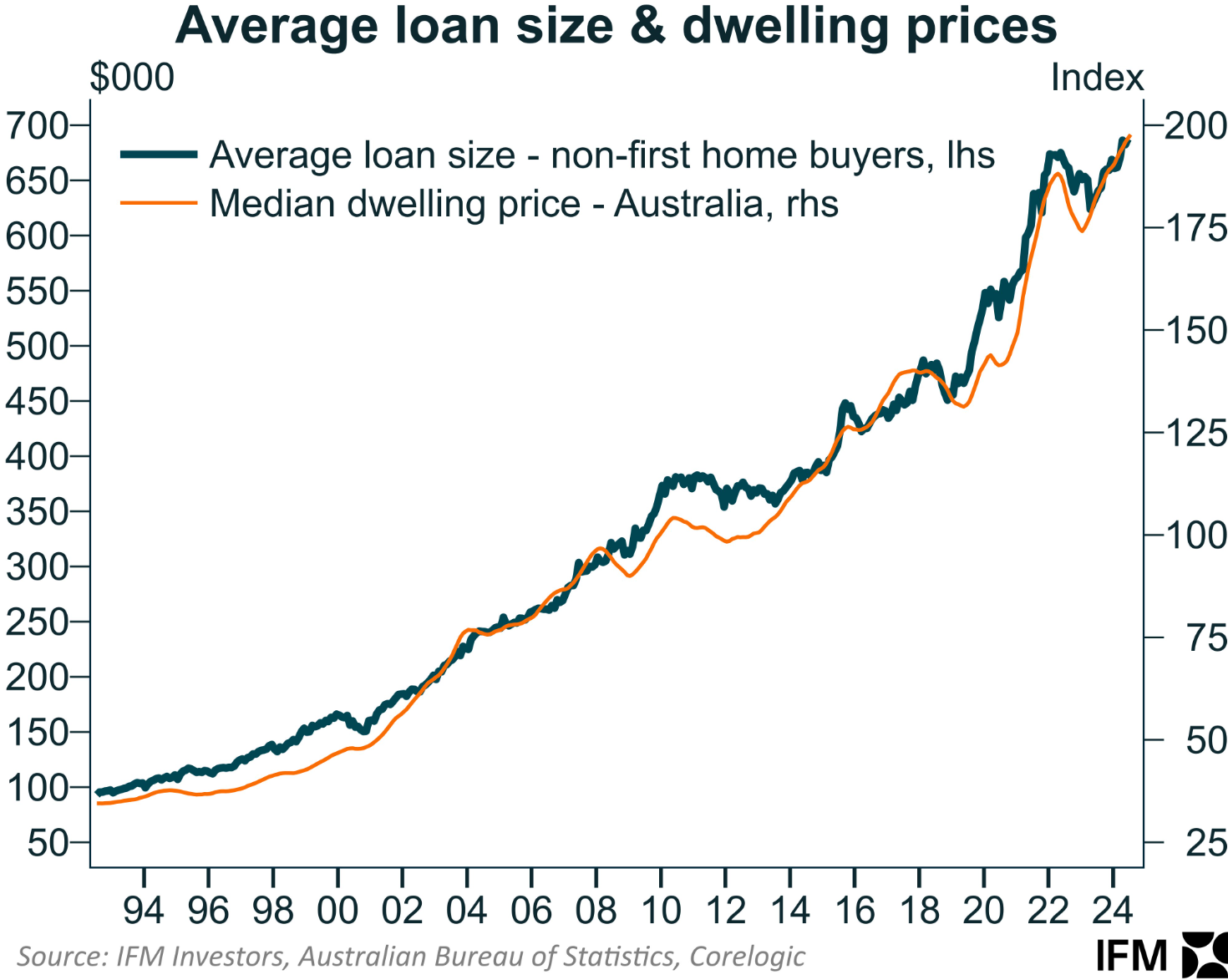The Reserve Bank of Australia (RBA) has delivered two 25 bp reductions in the official cash rate.
As illustrated below by Justin Fabo from Antipodean Macro, the rate cuts have resulted in a cumulative decline of 34 bps in the weighted-average interest rate on all existing housing loans in Australia since the peak in January 2025.

Despite the decline in borrowing costs, Roy Morgan’s mortgage stress results for June registered a surprise lift in stress.

Roy Morgan estimates that 28.4% of mortgage holders were ‘At Risk’ of ‘mortgage stress’ in the three months to June 2025, up 1.5% points from a month earlier. This represented the highest rate of mortgage stress since January 2025—before either of the RBA’s rate cuts.
The primary driver of the increase in mortgage stress in June was the larger housing loans taken out by purchasers and the larger amounts outstanding on home loans, amid soft income growth.
“This is not surprising when one considers other data sources which show national house prices in Australia”, said Michele Levine, CEO of Roy Morgan.
“The ABS ‘Total Value of Dwelling’ release showed average dwelling prices in Australia exceeding $1 million for the first time in the March quarter 2025, and more recent market figures show that figure continuing to increase to new record highs in recent months”.
“These results show although reducing interest rates generally does lead to lower levels of mortgage stress, this effect may only be short-term as new buyers entering the market are able to borrow more money for larger loans to get into the market, thus leading to an increase in mortgage stress”, Levine said.
Roy Morgan notes that mortgage stress is highest in New South Wales, which has the highest housing prices in the nation. It has also increased significantly in Queensland, which now has the second most expensive market.

Michele Levine’s comment that interest rate cuts only have a short-term impact on mortgage stress is apt and reflects the fact borrowers tend to borrow more when rates fall.
This is illustrated by the following chart from Alex Joiner from IFM Investors, which shows average mortgage sizes and dwelling values chasing each other higher.

Ultimately, lower interest rates do not make housing structurally more affordable, as they tend to result in borrowers taking out larger loans.

